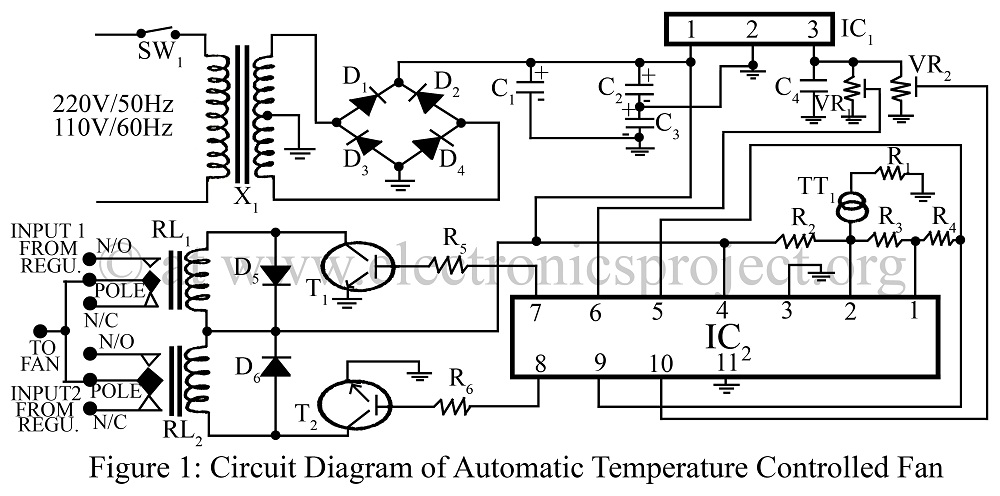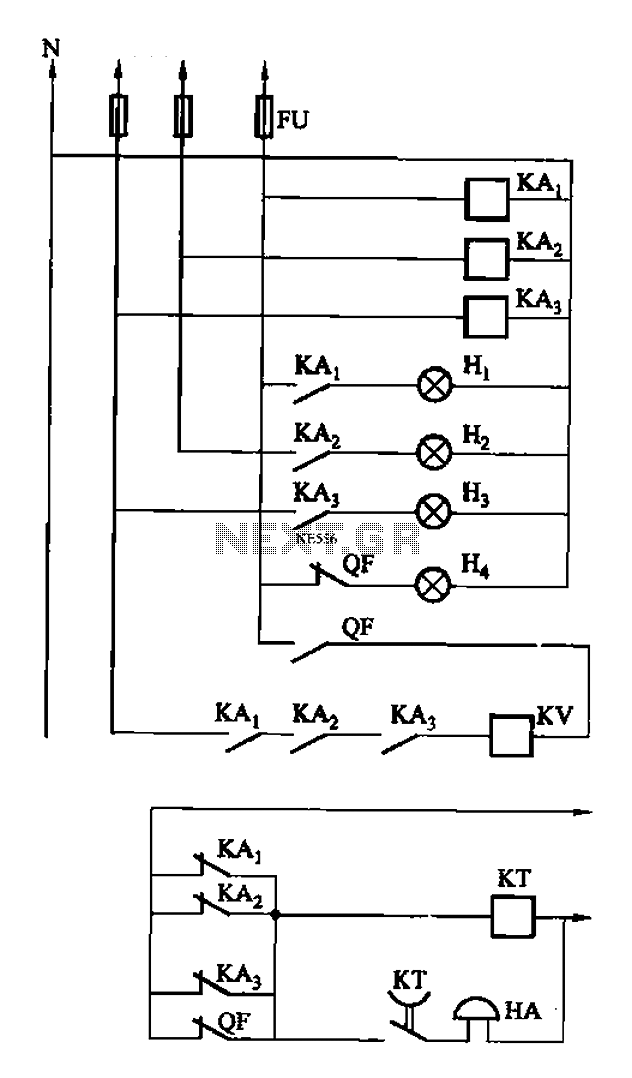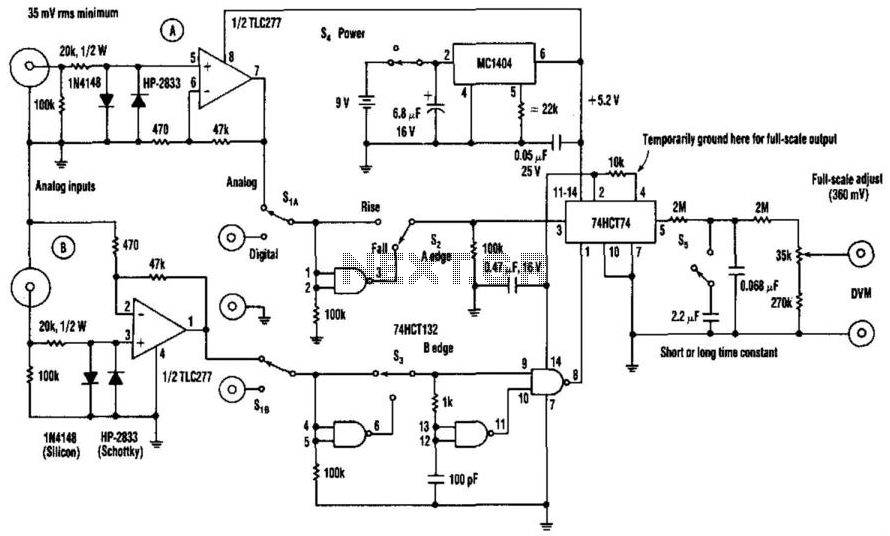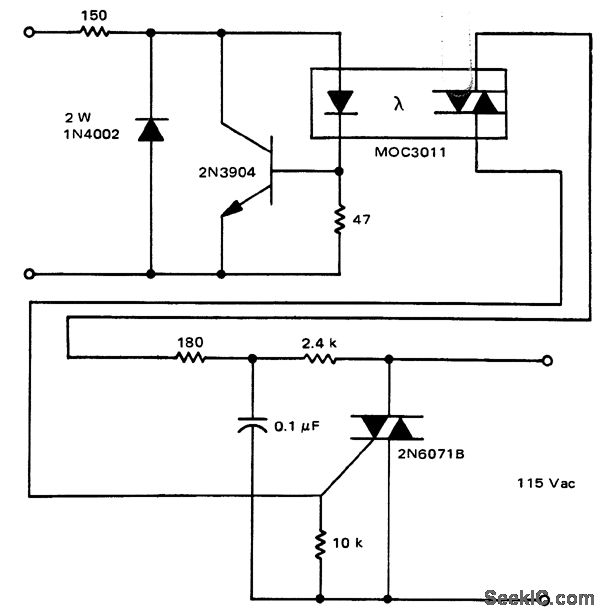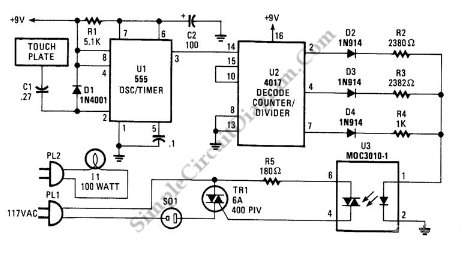
A Phase Controlled Triac (HT-32)
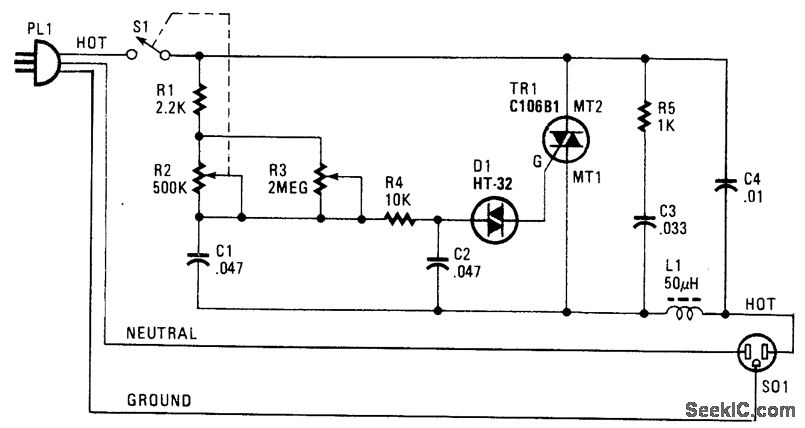
The following circuit illustrates a Phase Controlled Triac (HT-32) Circuit Diagram. Features include a simple circuit design, and bilateral triggering diacs provide a...
The Phase Controlled Triac circuit, utilizing the HT-32 component, is designed for applications requiring precise control of AC power. The circuit primarily consists of a Triac, which is a semiconductor device that can control the power flow in AC circuits by switching on and off at specific points in the AC waveform. The phase control method allows for the adjustment of the output voltage by delaying the triggering of the Triac.
In this circuit, bilateral trigger diacs are employed to ensure that the Triac can be activated in both halves of the AC cycle. This feature is particularly advantageous as it allows for symmetrical control of the load, regardless of the AC waveform's polarity. The simplicity of the circuit design facilitates easy implementation and troubleshooting, making it suitable for various applications, such as light dimmers, motor speed controls, and heater controls.
The circuit operates by utilizing a phase control technique, where the firing angle of the Triac is adjusted by varying the resistance and capacitance in the triggering circuit. The diacs serve as a trigger mechanism, allowing the Triac to turn on when the voltage across them exceeds a certain threshold. This ensures that the Triac remains off until the desired phase angle is reached, providing smooth control over the power delivered to the load.
Overall, the HT-32 Phase Controlled Triac circuit represents an efficient and effective solution for managing AC power in a variety of electronic applications, emphasizing ease of use and reliability.The following circuit shows about A Phase Controlled Triac (HT-32) Circuit Diagram. Features: Dsimple circuit, bilateral trigger diacs offers a .. 🔗 External reference
The Phase Controlled Triac circuit, utilizing the HT-32 component, is designed for applications requiring precise control of AC power. The circuit primarily consists of a Triac, which is a semiconductor device that can control the power flow in AC circuits by switching on and off at specific points in the AC waveform. The phase control method allows for the adjustment of the output voltage by delaying the triggering of the Triac.
In this circuit, bilateral trigger diacs are employed to ensure that the Triac can be activated in both halves of the AC cycle. This feature is particularly advantageous as it allows for symmetrical control of the load, regardless of the AC waveform's polarity. The simplicity of the circuit design facilitates easy implementation and troubleshooting, making it suitable for various applications, such as light dimmers, motor speed controls, and heater controls.
The circuit operates by utilizing a phase control technique, where the firing angle of the Triac is adjusted by varying the resistance and capacitance in the triggering circuit. The diacs serve as a trigger mechanism, allowing the Triac to turn on when the voltage across them exceeds a certain threshold. This ensures that the Triac remains off until the desired phase angle is reached, providing smooth control over the power delivered to the load.
Overall, the HT-32 Phase Controlled Triac circuit represents an efficient and effective solution for managing AC power in a variety of electronic applications, emphasizing ease of use and reliability.The following circuit shows about A Phase Controlled Triac (HT-32) Circuit Diagram. Features: Dsimple circuit, bilateral trigger diacs offers a .. 🔗 External reference
